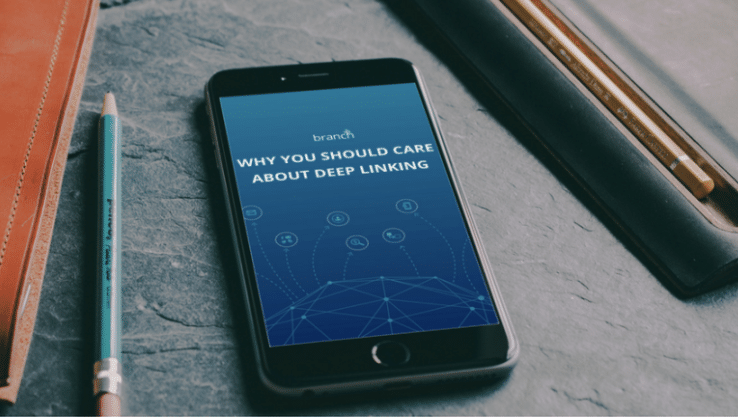This is a preview of our latest eBook, Why You Should Care About Deep Linking. To download the full eBook, click here.
By now, you’ve all probably heard the stats about how mobile is taking over the world. And let’s be honest — you may be pretty tired of hearing that mobile searches now outnumber desktop searches, or that there are more mobile devices on this planet than toothbrushes. But the stats that are really concerning discuss user behavior and how, on average, you’re spending nearly five hours per day staring at this little screen in your hands. What’s more, is that 90% of that time is probably in some sort of app. “That’s not me,” you calmly whisper to yourself, as you look up and realize that you’re reading this from your phone. Sigh.
While these stats may seem insignificant to you, they are extremely important to two groups in particular: mobile app developers and marketers. Your entire business depends on users spending time in apps. You’re the one vying for a phone’s precious storage and screen space, flirting with the incredibly fickle retention span of app users, and battling it out among the millions of other apps for your rightful place in the rankings.
{{ script_embed(‘wistia’, ‘lklbhx5jc7’, ‘undefined’, ‘responsive’) }}
And the truth is that marketers and mobile developers are suffering. You’re suffering because the market is completely saturated. Not only that, all of the power rests in the hands of the largest apps. The 10th most popular app only has about 12% of the adoption of the most popular. If we jump to the 1000th most popular app, that relative adoption drops to about 0.2%.
This means even apps in the top 1000 are struggling to gain mass adoption, even though there are 1.5 million other apps and over 56,000 new apps rolled out every month. It’s safe to say that the mobile market is a tough market to break through.
With about 99% of user engagement in the top 0.1%, developers and marketers are willing to try anything to acquire an app download. Many of them resort to paid installs, like those from Facebook or Google, but the market saturation has caused the cost-per-install to reach a point that is entirely impossible for the vast majority to keep up with.
In recent years, the cost-per-install has flattened but remains so high that developers are desperately searching for new, creative ways to acquire new users and reduce the cost-per-install. So, after countless hours of research spent on user acquisition, what have mobile marketers and mobile developers started to turn to? Deep linking. Deep linking provides the competitive edge that marketers and developers have been searching for all along.






















